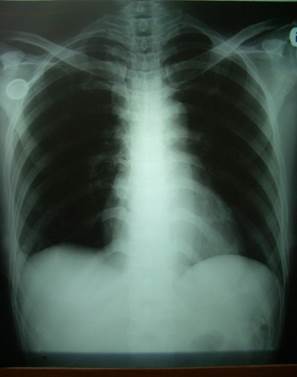Welcome to the oncology unit in our clinic. If you’re reading this, you or a loved one is preparing for chemotherapy treatment. This leaflet provides essential information about the port-a-cath, a device that facilitates the administration of your chemotherapy drugs.
- What is a Port-a-Cath?
A port-a-cath (often just called a “port”) is a small, implantable reservoir with a thin silicone tube that connects it to a vein. It allows healthcare professionals to draw blood and give treatments, including chemotherapy, without repeatedly puncturing your veins.


The left image shows a port in a patient receiving chemotherapy, while the right image shows the port catheter with the tip positioned at the heart

The appearance of the port before it is implanted in the body
Why Do You Need a Port-a-Cath for Chemotherapy?
Consistent Access: The port provides easy and repeated access to your bloodstream.
Comfort: Reduces the discomfort of multiple needle sticks.
Protection: Some chemotherapy drugs can damage skin and smaller veins. A port helps deliver these drugs safely.

The image shows a patient who received chemotherapy in the hand, resulting in severe vein inflammation (phlebitis), causing pain and making it impossible to continue chemotherapy through that vein

The image shows a hand injury resulting from chemotherapy drug leakage
The Insertion Procedure:
Preparation: You might be asked to fast for a few hours before the procedure. Ensure you follow any specific instructions provided by your healthcare team.
During the Procedure: The insertion is usually performed under local anesthesia and light sedation. A small incision is made on the chest to place the port, and another on the neck or upper chest to insert the catheter into a central vein.

This procedure was performed my many monitoring in order to make sure the safety of patients
Post-Procedure: You’ll be observed for a short period before being discharged. The incision sites may be sore for a few days.

The image depicts the atmosphere during the procedure, showcasing a wide array of instruments used to ensure the highest level of patient safety, including ultrasound and digital fluoroscopy systems
- Risks and Complications:
While port insertion is generally safe, potential risks include:
Immediate: Bleeding, infection, pneumothorax (air trapped between the lung and chest wall).
Later on: Port malfunction, blockage, or infection.
Always consult your healthcare provider with any concerns.
- After the Procedure:
Recovery: You may feel minor discomfort at the incision sites, which usually subsides in a few days.
Monitoring: The port will require occasional flushing to keep it open when not in use.
Usage: Once healed, the port can be accessed for chemotherapy or other treatments as prescribed.
- Caring for Your Port-a-Cath:
Cleanliness: Keep the port site clean and dry.
Awareness: Be alert for signs of infection like redness, swelling, or warmth around the port.
Medical Precautions: Inform all healthcare providers about your port before any procedures or treatments.
- Advantages of a Port-a-Cath:
Efficiency: Streamlines the chemotherapy process.
Durability: Can remain in place for months or even years.
Comfort: Reduces the stress and discomfort of repeated vein access.

The left image shows the X-ray after port implantation, while the right image shows the X-ray before the procedure
Frequently Asked Questions:
Will the port be noticeable?
The port sits under the skin, so it’s more discreet than external devices. There might be a slight bump where it’s placed.
How is the port removed?
If your treatment concludes or the port is no longer needed, it can be surgically removed in a similar manner to its insertion.
We understand that undergoing chemotherapy is a significant journey, and our team is committed to making it as comfortable and effective as possible. Always reach out with any questions or concerns.